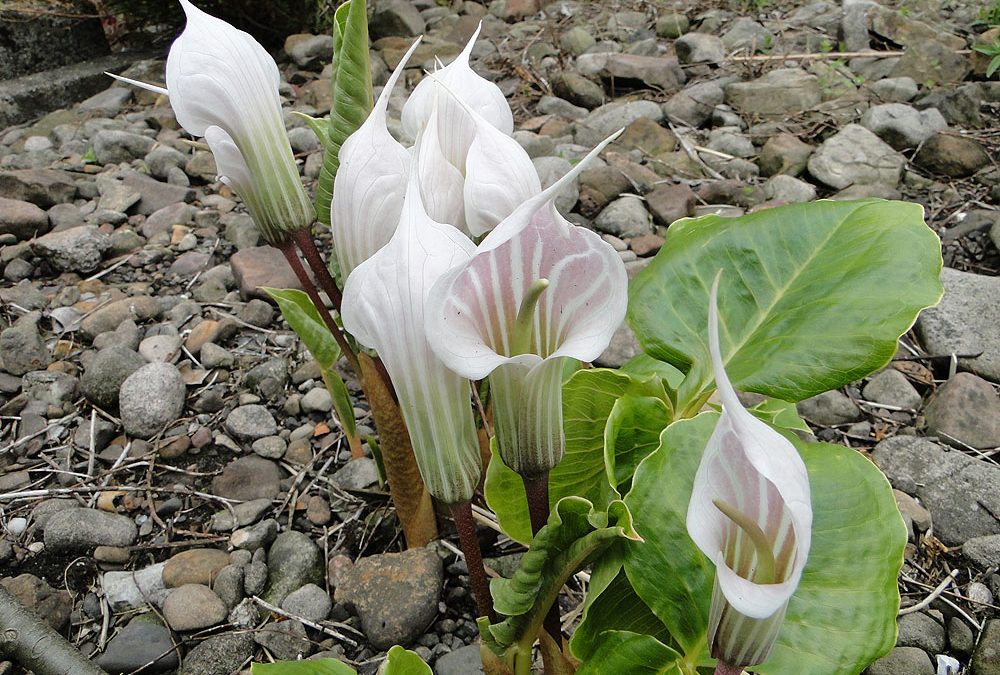About Arisaemas
About 150 species belong to this genus. In America we know the jack-in-the-pulpit, A. triphyllum, but arisaemas are also native to Japan, Himalayas and China.
The plants are produced from rhizomes and its strange flowers appear in spring or summer. The inflorescence has tiny flowers on a central stalk, called the spadix. The spathe or modified leaf appears as a hood over the spadix. The hood or spathe can be unusually striped in different color combinations. Keep in mind that Arisaemas belong in the woodland garden and direct sunlight makes for lighter foliage. In the fall after flowering, conspicuous red fruit will appear, while the foliage will have died back.
How to care for your Arisaema
Try to plant your arisaema as soon as possible. Be sure to keep the soil moist to the touch if you do not transplant immediately. Plants should be protected from direct sun and drying winds.
Where do I plant my Arisaema?
Arisaemas prefer partial shade in rich, moist soil. Tubers or plants should be planted in spring or fall. Non-hardy specimens can be grown in containers and overwintered indoors.
How do I plant my Arisaema?
Dig a hole that is twice as wide and deep as the container that the plant is in. Add compost or other organic material to the soil. Place the arisaema in the planting hole making sure it is even with the soil level, and gently firm the soil around it. Mulching around the plant will help keep it moist and happy.
What should I do in order to have my Arisaema increase in beauty from year to year?
Generally arisaemas need little care, except when growing non-hardy species which need over-wintering conditions where the temperature should be kept at 40 – 50 degrees Fahrenheit. To promote consistent flowering and fruit set, make sure the plants are well nourished.

